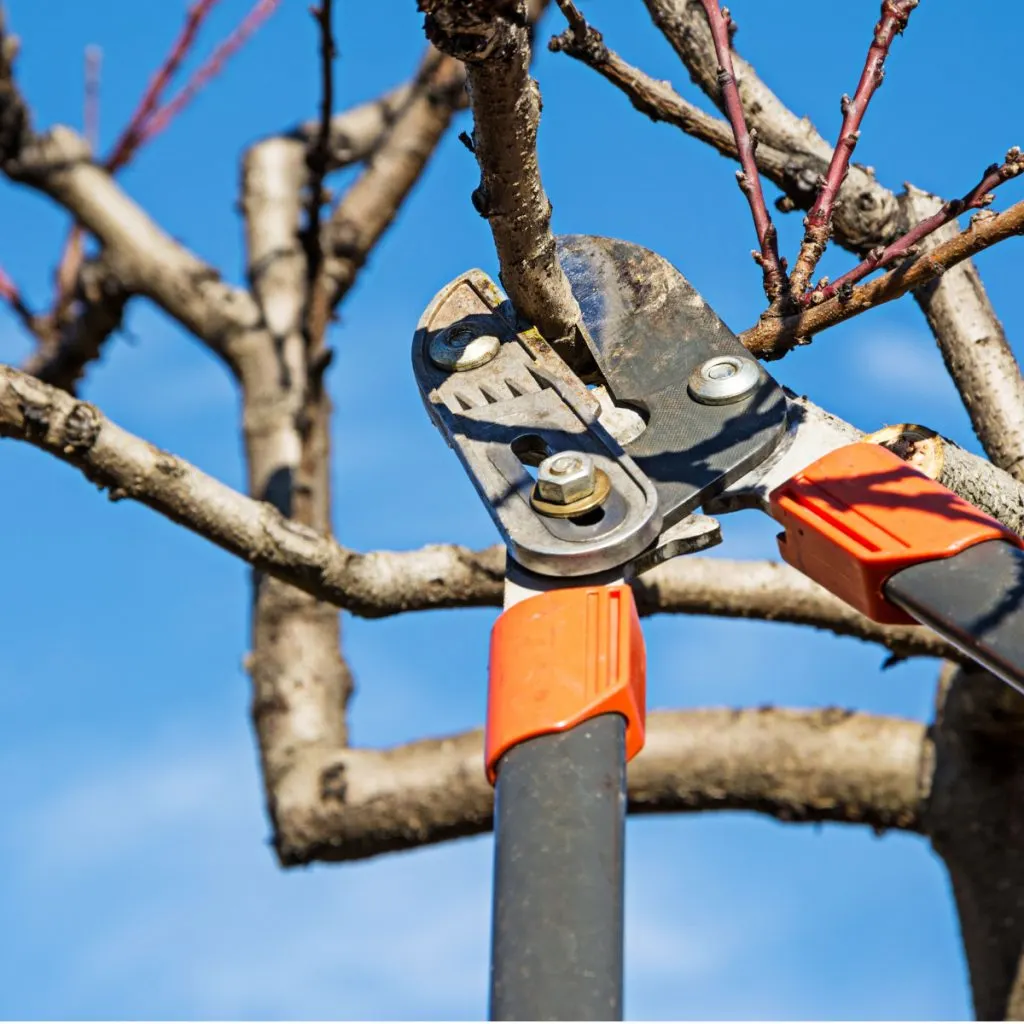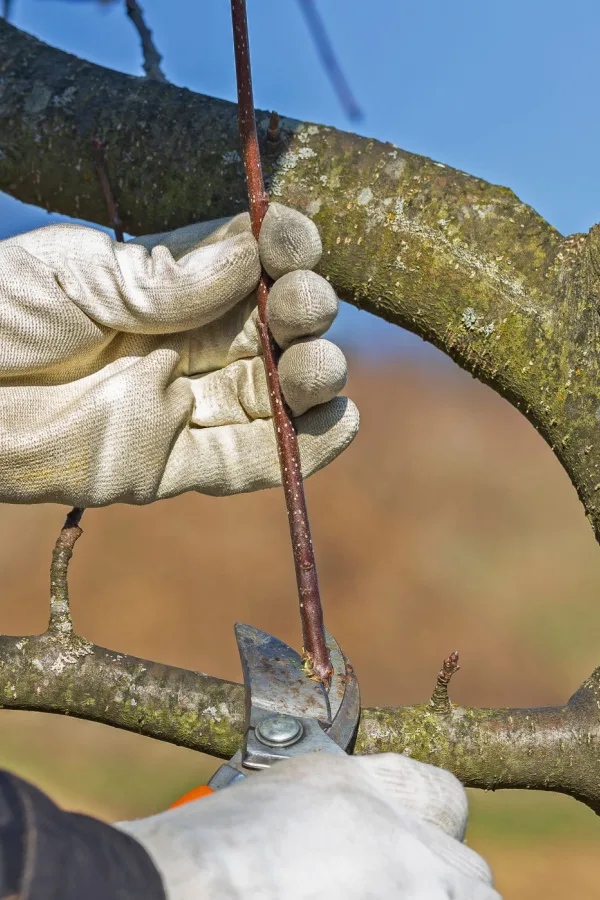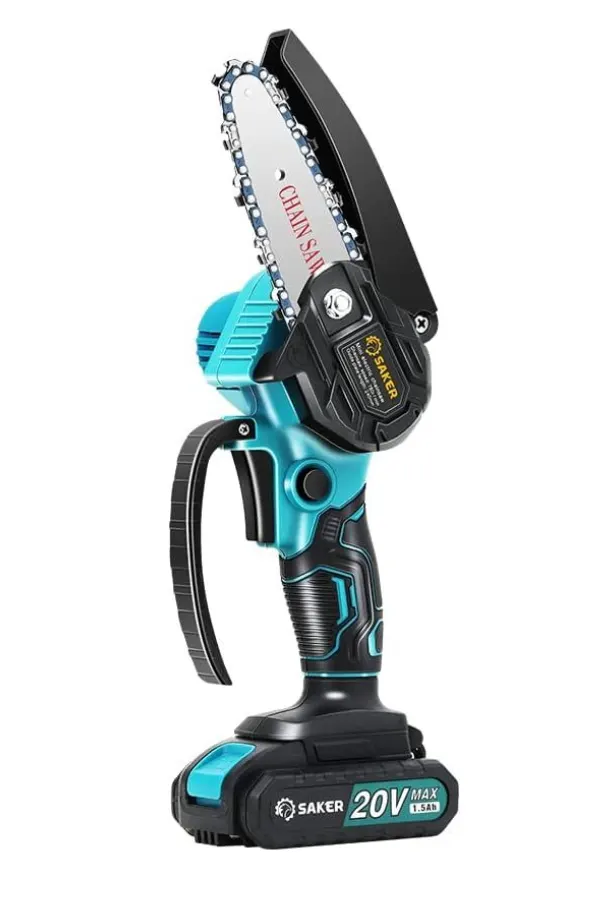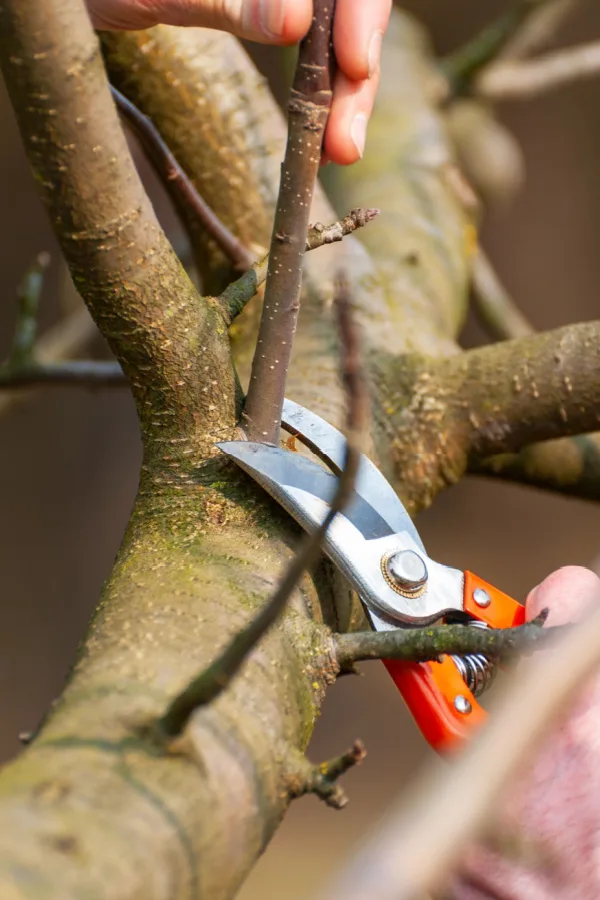Whether you have apple trees, plum trees, cherry trees or any other variety of fruit trees – the ideal time to prune them is right in the middle of winter – when they are completely dormant and resting up for next year!
Many gardeners struggle when it comes to knowing when they should prune their fruit trees. For most perennial plants, bushes and trees, fall is a great time for cutting back before winter sets in. And for many other plants, spring is the better choice. But for fruit trees, winter is actually the time to take action!
Pruning in the winter not only helps create a healthier tree, it also can lead to bigger and better fruiting for your trees. Unfortunately, trees that are left to grow unchecked are not just unsightly, they will also bear smaller fruit. And over time, less of it.

Why is fall bad for trimming back fruit trees? Because the act of pruning stimulates new growth. And as trees prepare for winter and head into dormancy, new growth can be quite detrimental to their health. This is actually true for quite a few perennial bushes too. See: 3 Perennials You Should Leave Alone In The Fall
With fall fruit tree pruning, new growth shoots don’t have adequate time to harden off before winter’s freezing temperatures settle in. In addition, the cuts from pruning don’t have adequate time to heal either. Both can and will leave a tree susceptible to the harsh conditions winter can bring.
Why Winter Is The Best Time To Prune Fruit Trees
So why prune in the winter versus spring or summer? In the spring, when a fruit tree first comes out, it is concentrating all of its energy on filling out a canopy of foliage – and unfurling its blooms for future fruit. But if you prune as that occurs, all of that energy is then diverted to healing and re-growth.
Summer pruning presents the same stressful issues as well for fruit trees. At this point, the energy that should be going to filling out fruit once again goes to healing and re-growth.
In winter, because fruit trees are dormant, there is little stress to a tree when it is cut back. In fact, in full dormancy, there is no stress at all. And that allows the tree to conserve and store more energy for flowering and fruiting once spring and summer arrive.

Last but not least, because all of a fruit tree’s leaves are gone for the season in the winter, branches are easy to see and cut. That is certainly not the case when trying to prune back a full canopy of leaves in spring or summer!
So now that we have established why winter is the optimum time for pruning, here is a look at how to go about it this winter to get your trees in shape for big production next year!
How To Prune Your Fruit Trees This Winter For Bigger & Better Fruit Next Year!
Success with pruning all begins with having the proper tools for the job. For pruning fruit trees, 3 basic tools are all you need – a pruning saw or mini hand held chain saw, a pair of pruning loppers, and a good pair of hand held pruners.
A pruning saw or mini chain saw is perfect for removing large limbs and branches quickly. Mini chain saws really make this task easy – and with the advent of battery operated units that are lightweight and easy to operate – they are certainly a great option to avoid all of that hand sawing! Affiliate Link: Saker Mini Chainsaw,6 Inch Portable Electric Chainsaw Cordless

Loppers are good for removing most small to mid size branches up to a few inches in diameter. The hand pruners, meanwhile, are ideal for easily clearing away the smaller shoots and starts. As for the loppers and hand held pruners, investing in a ratcheting tool versus traditional pruners can be extremely helpful.
Ratcheting pruners use a gear and ratchet to make pruning thick or tough limbs far easier. Instead of traditional models that use just hand pressure to cut, the gear allows you to cut bigger with far less pressure. Affiliate Link: Garden Guru Ratchet Hand Pruning Shears
Now that you have the tools you need – here’s how to prune like a pro!
3 Steps To Pruning Success – How To Prune Your Fruit Trees This Winter
When it comes to pruning fruit trees, no matter the tree variety, you can complete the process in three easy steps – and the first step is always starting with clearing away any wood that has damage.
#1 Cutting Away Damaged Wood
Begin pruning your fruit trees by removing any wood that is dead, diseased or damaged. The last thing you want is a tree spending energy attempting to heal damaged limbs, so your first cuts should concentrate on eliminating any wood that is less than ideal.
When making cuts, always trim back any limbs flush to the trunk or limb. Keeping all cuts flush keeps the tree from having tiny stubs. Not only are they unsightly, they will often produce new, unwanted growth from the stub.
Listen In To This Month’s Garden Podcast Below!

#2 Thinning Out The Middle – How To Prune Your Fruit Trees This Winter
Next, it’s time to begin to thin out the tree. This is the one pruning task that often causes more angst than any other. The good news is, keeping it simple is the key to success. For thinning out, think of pruning as opening a blind or window shade for the tree.
Trees, much like vegetable plants and flowers, need light and air to survive and thrive. Thinning is an important step that opens up the tree canopy to let air and light in. By doing this, it allows the fruit to form and ripen better. It also helps to improve the overall health of the tree.
To thin, begin by removing branches that cross each other’s path. Remove the smallest or least healthy of the two crossing. Repeat this process until the branches within the core of the tree are not touching. This will allow the necessary light into the tree.
Next, remove branches with horizontal or downward growth. These branches struggle to hold mature fruit. Branches that grow upwards or at an upward angle are the best to leave. They naturally hold fruit more securely.
3) Trim Back Last Year’s Growth
Finally, the very last step is to trim back a portion of last year’s growth. This process helps to strengthen the tree, and conserve vital nutrients from being spent on too much overgrowth.

When trimming back tree growth, a good rule of thumb is to take off about a quarter (25%) of last year’s growth. This will help to shape the tree into a nice form, and keep it manageable. That is not only good for the tree, but for harvesting as well!
A Few Final Tips – How To Prune Your Fruit Trees This Winter
One thing you always want to do when pruning any bush or tree is to make sure your pruners are sharp before you begin to cut. Dull blades will tear limbs, branches and bark. This causes both stress and injury to the tree.
Having a clean blade is equally important. The metal blades and teeth on pruners and saws can easily carry disease from tree to tree. Before cutting, wipe down blades with rubbing alcohol, or a 5/1 solution of water and bleach. It’s also important to clean the blades between whenever you move to a new tree.
Once you finish cutting back last year’s growth, all that is left is to pick up the trimmings from around your trees. Cleaning up any branches not only keeps your landscape tidy, it will keep your mowing blades safe and sharp next spring too. Here is to pruning your fruit trees this winter for bigger and better fruit next summer! Winter also happens to be the ideal time for pruning grape vines as well – see Why You Need To Prune Your Grapevines In The Winter – And How To Do It!
This Is My Garden
Follow Our Facebook Page For Great Gardening Tips And Advice! This Is My Garden Facebook Page
This Is My Garden is a garden website created by gardeners, for gardeners. Jim and Mary Competti have been writing gardening, DIY and recipe articles and books and speaking for over 15 years from their 46 acre Ohio farm. They publish three articles every week, 52 weeks a year. Sign up today to follow via email, or follow along!
